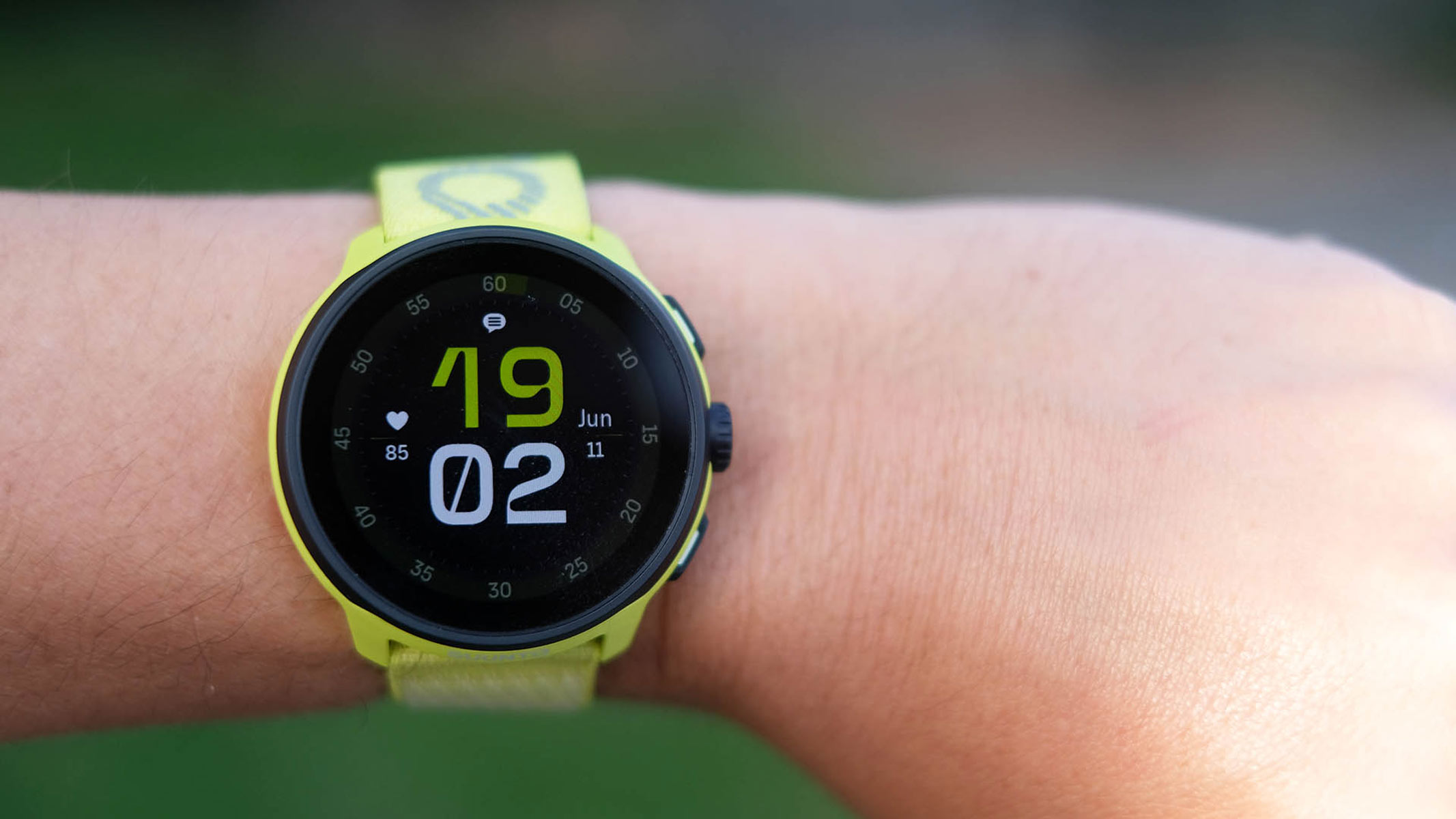
Skip to main content
Close main menu
Live Science
Sign up to our newsletter
View Profile
Search Live Science
Planet Earth
Archaeology
Physics & Math
Human Behavior
Science news
Life’s Little Mysteries
Science quizzes
Newsletters
Story archive
COVID vaccine poll
Ant clones members of another species
JWST takes best image yet
Science history: Gravitational waves detected
Best star projecter
Don’t miss these
Garmin Forerunner 570 review — Bright, accurate, slightly overpriced
Garmin Forerunner 970 review — A serious smartwatch for running pros
Best budget fitness trackers 2025: Cheap but mighty
Best fitness trackers 2025: From smart rings to multisport GPS watches
Whoop MG review — A screenless fitness tracker for performance geeks
Best Garmin watches 2025: From basic fitness bands to powerful adventure smartwatches
Best fitness trackers for beginners 2025 — From Apple Watch to Garmin Forerunner 165
Amazfit Helio smart ring review — Accurate sleep tracking without breaking the bank
Best Fitbit watches 2025: Tried and tested
Best sleep trackers 2025 — From smart rings to fitness watches
Best smart rings 2025 — Our top 3 sleep and fitness tracker rings, tried and tested
One of the best-value Garmin watches has dropped to its lowest ever price
Best running headphones 2025: Unleash the power of music
Outdoor explorers! Don’t miss these 8 last-minute Prime Day smartwatch deals
Garmin and Samsung finish the Prime Day sale with a bang — these two smartwatches are now under $200 and at their lowest-ever price
Suunto Run fitness tracker review — Light, feature-packed and reasonably priced
A budget-friendly, feature-rich fitness tracker good for sports and running if heart rate tracking isn’t your priority.
Andrew Williams
15 September 2025
When you purchase through links on our site, we may earn an affiliate commission. Here’s how it works.
(Image: © Andrew Williams)
Live Science Verdict
The Suunto Run is a top option if you want a feature-packed sports and running watch that does not cost a fortune. It goes well beyond the basics, although it’s far from best-in-class in the accuracy of its heart rate readings during exercise.
Check Amazon
Check Walmart
Good features for the money
Light and comfortable
Solid GPS accuracy
Uses high-end materials for its class
Heart rate readings not always entirely accurate
Screen could be brighter for sunny days
Limited coaching features
Music support is basic
“Raise to wake” can feel sluggish during workouts
Best picks for you
Best budget fitness trackers 2025: Cheap but mighty
Best fitness trackers 2025: From smart rings to multisport GPS watches
Best Garmin watches 2025: From basic fitness bands to powerful adventure smartwatches
Why you can trust Live Science
Our expert reviewers spend hours testing and comparing products and services so you can choose the best ones for you. Find out more about how we test.
Performance
What the users say
Alternative products
How we tested
The Suunto Run is a great, affordable fitness tracker running watch that has a seriously compelling array of features at a relatively low price.
Garmin-baiting highlights include breadcrumb navigation of routes and offline music playback. They make the Suunto Run a serious alternative to a Garmin Forerunner 165 Music, for less money.
Heart rate accuracy is perhaps the key drawback of this otherwise punchy watch. It’s no use for weights-based gym sessions, and while run tracking results are much better, you can’t always trust its readings in the first handful of minutes of a workout.
The Suunto Run was released in June 2025 and costs $249/£199/$449. Suunto keeps things simple, with no extra sizes or models, and no added costs, whether you want a yellow, orange or black finish.
Suunto Run: Design
Steel bezel
Mid-size 46mm diameter casing
Easy-adjust fabric strap
The Suunto Run is light, good-looking and comfortable to wear. (Image credit: Andrew Williams)
Display: 1.32-in, 466 x 466 OLED
Dimensions: 46 x 46 x 11.5 mm
Colors: Yellow/orange/black/grey
Finish: Stainless steel and plastic
Sensors: PPG, dual-band GPS, barometric altimeter, compass
Weight: 36 g
Sizes: 46 mm only
Water resistance: 5ATM
Compatibility: Android 8.0 and above, iOS 16.0 and above
Battery life: Up to 12 days
The Suunto Run may be a conspicuously approachable fitness watch, with a price to match, but Suunto has not reverted to using cut-price materials to achieve that.
It has a stainless steel bezel and Gorilla Glass screen protection. The main part of the casing is tough plastic, but Suunto still offers a few snappy-looking colours to avoid any sense of a generic build or appearance.
We have highlighter yellow, but the Suunto Run also comes in orange and plain black.
Sign up for the Live Science daily newsletter now
Get the world’s most fascinating discoveries delivered straight to your inbox.
Contact me with news and offers from other Future brandsReceive email from us on behalf of our trusted partners or sponsorsBy submitting your information you agree to the Terms & Conditions and Privacy Policy and are aged 16 or over.
If we were to compare the Run with its nearest Garmin competitor, the Forerunner 165 Music, the Run clearly wins on materials. That Garmin has a plastic “polymer” bezel and unspecified “chemically strengthened” glass, not Gorilla Glass from Corning.
The Suunto Run’s strap is also a hit for both look and feel. It’s a free-moving velcro fabric strap, one that can be adjusted to any length. It’s light, comfy and some may find it preferable to a classic silicone watch strap. It does need to be done up fairly tight to get decent heart rate results, though, as it’s naturally less grippy than a rubbery silicone strap.
The Suunto Run features an easily adjustable fabric strap. (Image credit: Andrew Williams)
This watch weighs just 36g, light enough for 24/7 wear. However, it’s not a truly petite design. The 46mm Suunto Run looks about right on our wrist, but some of you may be after something a little dinkier. There’s no smaller option.
The watch is rated at 50m/5ATM water resistant, so you don’t need to take it off when you have a shower or go to the swimming pool. But it’s not ready for scuba diving.
Even the controls go beyond the basics, too. The Suunto Run is a touchscreen watch, with two buttons on the side, next to a clicky rotary dial, which is handy for rapidly flicking through your daily stats or through the many exercise tracking modes.
Suunto has also nailed the Run’s haptics, with a little “click” like vibration as you use the crown to scroll through menus. Haptics are often a little crude in cheaper watches, but they feel great here.
The Suunto Run features a touchscreen, two side buttons and a rotary dial. (Image credit: Andrew Williams)
Suunto Run: Features
Dual-band GPS
Route guidance but no mapping
Training load and VO2 Max stats
The Suunto Run has a fairly large 1.32-inch AMOLED screen with a high pixel count of 466 x 466 pixels. Like all of today’s OLED watches, it’s sharp and clear. And while it doesn’t fill out as much of the face as an Apple Watch, that’s the norm for these exercise-focused watches.
This screen is bright enough for comfortable use outdoors, without the incredible brightness we’re seeing in some of the latest models. It’s perfectly fine for an affordable watch like this not to be at the vanguard of tech progress. However, its “raise to wake” gesture is a little sluggish, making it feel as though you’re left waiting a second to see your stats when out for a run. Not ideal.
The Suunto Run features a bright and colorful 1.32-inch AMOLED display. (Image credit: Andrew Williams)
So what can it do? The Suunto Run has a heart rate reader with the extra red LEDs required for blood oxygenation readings. It has a barometric altimeter for altitude data, and a temperature sensor too.
It, of course, has its own GPS chip for location tracking and even has 4GB of onboard space for music or podcasts.
These can be played through a pair of wireless headphones (or a speaker) only, as there’s no onboard speaker in the Suunto Run. You need to feed it digital files too, as there’s no support for streaming service downloads, which you do get in the Forerunner 165 Music.
What makes this a next-level tracker for runners is its navigation suite of features. While the Run lacks full on-watch maps, you can devise routes on Suunto’s phone app and sync them to the watch so you can see where you’re going.
The Suunto Run impressed us with its wide range of features. (Image credit: Andrew Williams)
It uses standard GPX file data, so you’re by no means limited to Suunto’s route creation software either. We used the Trail Router app a bunch of times during testing, for example.
Suunto also provides some decent athlete-friendly stats. There’s VO2 Max, one of the best ways to judge your progress over time, and training load, which Suunto calls Progress. The watch also shows you a recovery percentage, to give you an idea if you might be overdoing things.
A virtual coach is what the base Suunto Run experience lacks. While the stats give you some idea of how tired you may be, the watch doesn’t tell you exactly what sort of workout you should be doing in order to make progress at a decent rate. Suunto’s version of it is called SuuntoPlus, and it’s used with other watches from the brand, but not this one.
However, if you want to use a third-party training app like Runna anyway, the Suunto Run does let you create your own guided interval sessions. You just have to make them yourself, in the Suunto phone app. This is an area where the Garmin Forerunner 165 has a real advantage, though. Its coaching features are loads better at the time of review.
The Suunto Run tracks 34 different activities, including weight training and yoga. (Image credit: Andrew Williams)
Suunto Run: Performance
Good GPS performance
Flawed HR accuracy
Predictable major battery life loss in always-on mode
Suunto says the Run watch lasts up to 12 days off a charge, or for 20 hours of GPS-tracked activity. We’ve found that around an hour and a half of run tracking takes 10% from the battery, although how much you check your stats will change power use a bit.
To get anywhere near Suunto’s 12-day claim, you’ll need to avoid the “always on” screen mode, which displays the time all day. With that mode, you’re looking closer to 3-5 days, depending on how much exercise tracking you do. It’s fairly swift to charge, reaching 50% in just over 21 minutes, while it hits 100% after 68 minutes.
There’s good news on the tracking front, as the Suunto Run has dual-band GPS. This is where the location chip can use two sets of location frequencies, giving the watch a better chance of locking onto your signal even in challenging areas like dense forests or high-rise-packed cities.
The Suunto Run delivered solid performance in our tests. (Image credit: Andrew Williams)
Tracking accuracy was good in testing, with no loss of signal and very similar results recorded to the Garmin Forerunner 970. Initial triangulation could be a touch faster, though.
The heart rate readings are more of a mixed bag. In some runs, the Suunto Run’s results look perfect fine. However, on many runs the watch was very wide of the mark for the first few minutes of tracking, before finally returning to reality.
This typically plays out with the Run either recording a far too high or too low result for up to five minutes, in the worst examples. Dodgy early readings were something very common among these watches a few years ago, but the best have banished the effect. Suunto hasn’t quite yet.
The Suunto Run was also routinely very poor at recording weightlifting-based gym sessions. What you should see here is loads of short, sharp heart rate spikes during these sessions, but the Run watch largely just recorded a spike-free, meandering mush. It does just fine with longer sessions on the bike, elliptical or stepper, but just isn’t up to the task at short intervals.
The heart rate measurements in the Suunto Run can be a hit-and-miss. (Image credit: Andrew Williams)
Suunto Run: User reviews
The Suunto Run currently has a 4.4 rating on Amazon at the time of writing. While most buyers have only positive things to say about this running watch, there were some criticisms.
One reviewer says, as we noted earlier, the “raise to wake” function isn’t responsive enough. Another commented on the fact that there’s no app store, which is true, but not something that should put many off if you are actually shopping for a runner’s watch. Even with a Garmin, we don’t think most people use the Garmin Connect app store all that much.
Should you buy the Suunto Run?
The Suunto Run is a solid mid-range running watch and a good alternative to pricier fitness trackers from Apple and Garmin. (Image credit: Andrew Williams)
✅ Buy it if: You want a fairly affordable OLED runner’s watch that still has enthusiast features. It has the stats you need to balance a busy workout schedule, plus neat extras like on-watch navigation and music support.
❌ Do not buy it if: You want a super petite watch or are out to predominantly record your gym workouts. The heart rate array doesn’t handle weightlifting-based gym sessions, which will throw off other stats. It’s better for cardio than lifting.
If Suunto Run isn’t for you
There are a few great alternatives to the Suunto Run, but it is one of the better options if you’re not put off by the heart rate wobbles. First up is a watch we mentioned multiple times in the review, the Garmin Forerunner 165 — or Forerunner 165 Music if you need music support.
It’s more expensive, has a smaller screen and uses cheaper materials. Several of the core parts are superior, though. It has better coaching features and a more accurate heart rate reader. And its support for music service downloads (including Spotify) will be a killer extra for some.
Coros’s competitor is the Pace 3, a long-term affordable fave. Its big difference is in screen tech. It has a transflective screen, which looks dull by comparison but leads to longer and more consistent battery life. It’s a top buy, but won’t seem as glossy in person as the Suunto Run.
Suunto Run: How we tested
(Image credit: Andrew Williams)
The Suunto Run was used over two lengthy testing stints, allowing us to use the watch before after it had been given some time to receive an update. But unfortunately this did not appear to fix our issues with its heart rate reliability.
Start to end, the testing period lasted just under three months, and tracking activities were largely runs, gym sessions and a few bike rides, predominantly using virtual cycling platform Zwift. During dedicated testing the Suunto Run was worn as my one and only watch, to make sure I was using it to tell the time and check notifications — you don’t want to go too easy on the battery by using it as a secondary watch. And while it wasn’t worn 24/7 every single day, it was worn like that for extended periods to get a better idea of its sleep tracking abilities.
Suunto Run: Price Comparison
No price informationCheck Amazon
No price informationCheck Walmart
We check over 250 million products every day for the best prices
powered by
Andrew Williams
Andrew Williams is a freelance journalist based near London. He has written about tech for over a decade, contributing to sites such as WIRED, TechRadar, TrustedReviews, Wareable, Stuff, T3, Pocket-lint and many others. When he’s not covering fitness tech, he writes about mobile phones and computing, as well as cameras.
You must confirm your public display name before commenting
Please logout and then login again, you will then be prompted to enter your display name.
Garmin Forerunner 570 review — Bright, accurate, slightly overpriced
Garmin Forerunner 970 review — A serious smartwatch for running pros
Best budget fitness trackers 2025: Cheap but mighty
Best fitness trackers 2025: From smart rings to multisport GPS watches
Whoop MG review — A screenless fitness tracker for performance geeks
Best Garmin watches 2025: From basic fitness bands to powerful adventure smartwatches
Latest in Exercise
How the surface you exercise on might increase your risk of cramps
This premium Garmin watch is a close match for the pricey Fenix 8 — and it is now a huge $321 off
The 3 best fitness tracker deals we have spotted in the Labor Day sale
Garmin Forerunner 970 review — A serious smartwatch for running pros
Garmin Forerunner 570 review — Bright, accurate, slightly overpriced
Sports records quiz: How much do you know about the greatest athletic feats of all time?
Latest in Reviews
We tested the Canon EOS R6 II in a nature reserve — here’s our verdict
Suunto Run fitness tracker review — Light, feature-packed and reasonably priced
Levoit Sprout air purifier review — Baby-friendly solution to airborne pollutants
Olympus OM-D E-M10 Mark IV review
Canon EOS R5 II review
Canon RF 100mm f/2.8L Macro IS USM lens review
LATEST ARTICLES
TRAPPIST-1e might have an atmosphere, JWST hints
New EV battery tech could power 500-mile road trips on a 12-minute charge
The best star projector we’ve tested is 38% cheaper on Amazon, taking it to one of its lowest-ever prices
Pawnee Star Chart: A precontact elk-skin map used by Indigenous priests to tell an origin story
Where is Queen Boudica buried?
Live Science is part of Future US Inc, an international media group and leading digital publisher. Visit our corporate site.
Contact Future’s experts
Terms and conditions
Privacy policy
Cookies policy
Accessibility Statement
Advertise with us
Web notifications
Editorial standards
How to pitch a story to us
Future US, Inc. Full 7th Floor, 130 West 42nd Street,
Please login or signup to comment
Please wait…



